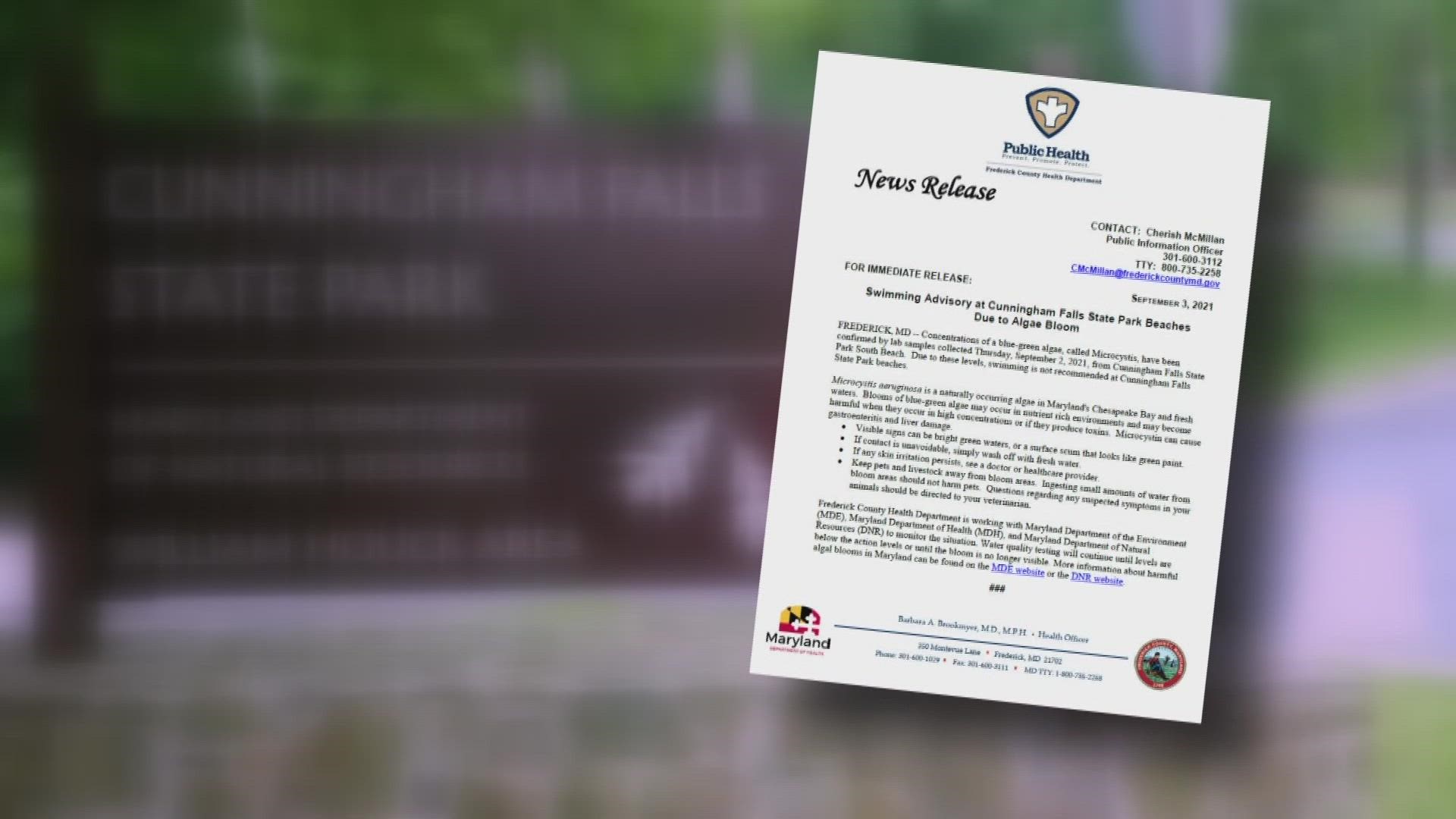FREDERICK, Md. — Floodwaters have quickly receded in Frederick County, Maryland, but there are new health and environmental advisories.
Toxic blue-green algae has been detected this week in a popular swimming lake in Cunningham Falls State Park, according to an alert issued by the county's health department late Friday.
The department recommends people and pets avoid water contact at the south beach swimming area inside the park.
"The algae bloom is likely a result of the significant rain this week, as recent samplings of this lake had shown no evidence of a bloom," reported Maryland Department of Natural Resources spokesman Gregg Bortz.
"The algae may have been washed from upstream or stirred up from the lake bottom. Increased nutrients in the water can fuel the bloom."
Test samples were taken Thursday in the wake of heavy rain in the area.
In addition, the department is warning residents to avoid contact with any floodwaters for at least a week because of the risk of contamination from sewage spills and other sources.
The department reports that sewage spills were reported in Emmitsburg, the City of Frederick, and in Middletown, in the wake of the heavy rains.
According to the alert, residents should "avoid all floodwaters even as they recede as all floodwaters may contain unknown contaminants."
The toxic blue-green algae reported in Cunningham Falls State Park is Microcystis aeruginosa, according to the health department announcement.
"It is a naturally occurring algae in Maryland's Chesapeake Bay and fresh waters. Blooms of blue-green algae may occur in nutrient-rich environments and may become harmful when they occur in high concentrations or if they produce toxins. Microcystin can cause gastroenteritis and liver damage," the alert said.
According to health authorities:
- Visible signs can be bright green waters or a surface scum that looks like green paint.
- If contact is unavoidable, simply wash off with fresh water.
- If any skin irritation persists, see a doctor or health care provider.
- Keep pets and livestock away from bloom areas. Ingesting small amounts of water from bloom areas should not harm pets. Questions regarding any suspected symptoms in your animals should be directed to your veterinarian.

